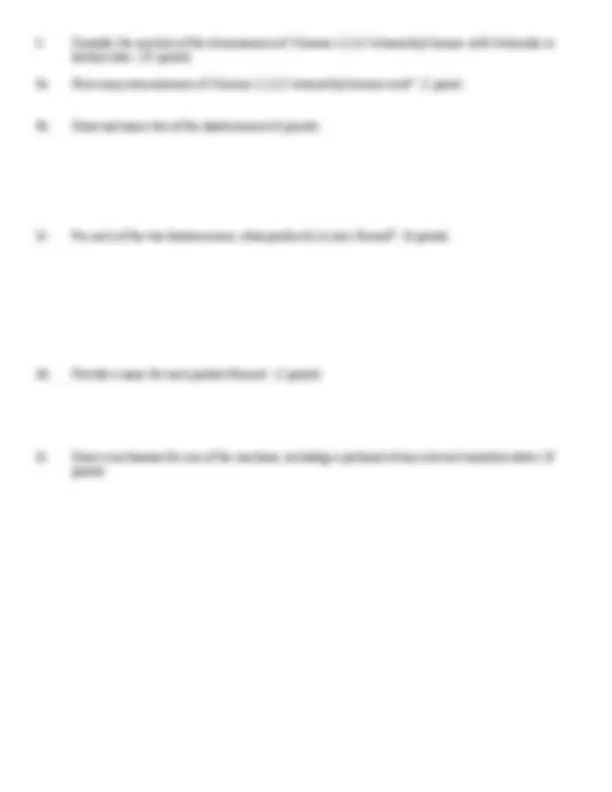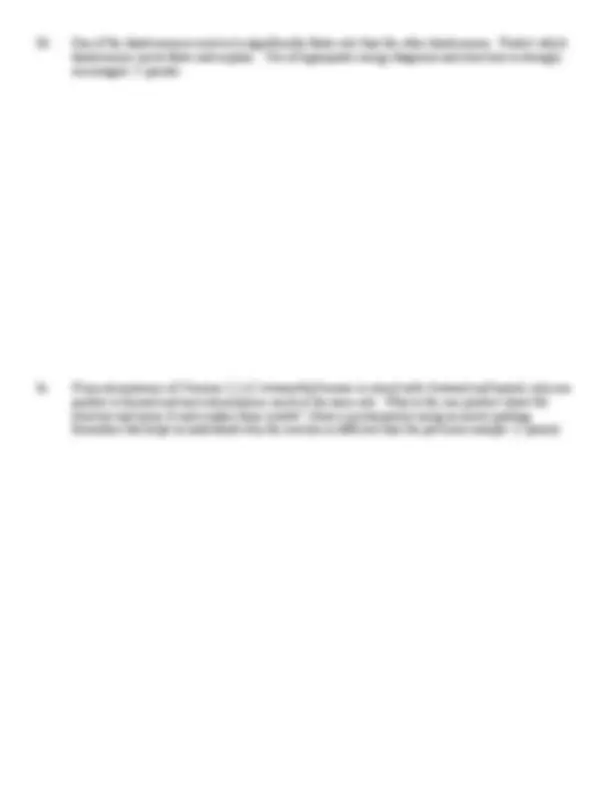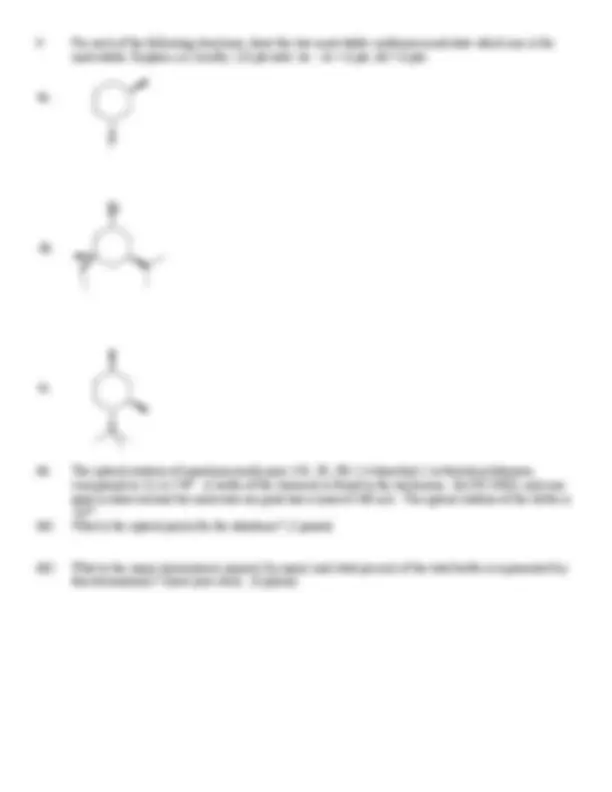





Study with the several resources on Docsity

Earn points by helping other students or get them with a premium plan


Prepare for your exams
Study with the several resources on Docsity

Earn points to download
Earn points by helping other students or get them with a premium plan
Community
Ask the community for help and clear up your study doubts
Discover the best universities in your country according to Docsity users
Free resources
Download our free guides on studying techniques, anxiety management strategies, and thesis advice from Docsity tutors
Whittier college's organic chemistry test #4 for course chem 231a, held on november 25, 2002. The test covers various topics including the shape of cyclohexane, diastereomers, base properties for e2 reaction, and reaction predictions. Questions include drawing structures, naming products, and explaining reaction mechanisms.
Typology: Exams
1 / 5

This page cannot be seen from the preview
Don't miss anything!




Name: Whittier College
120 Points Total November 25, 2002
1a. What is the shape of cyclohexane? Draw it and explain briefly why it is this shape.
1b. What is a diastereomer? Provide two structures that demonstrate what a diastereomer is. Explain briefly.
1c. What are the experimental / physical differences between diastereomers? Explain briefly.
1d. What makes a base a good base for the E2 Reaction? Explain briefly.
t-butanol / heat
H Br
O
2a.
2b.
2c.
2d.
2e.
CH 3 O-^ Na+
NaOCH 3 / Et 2 O
I
O (^) K DMF
Br
Br
S
O
O
O
Et 2 O
3d. One of the diastereomers reacts at a significantly faster rate than the other diastereomer. Predict which diastereomer reacts faster and explain. Use of appropriate energy diagrams and structures is strongly encouraged. (7 points)
3e. If any stereoisomer of 3-bromo-2,2,4,5-tetramethyl hexane is mixed with t-butanol and heated, only one product is formed and each stereoisomer reacts at the same rate. What is the one product (draw the structure and name it) and explain these results? Draw a mechanism(s) using an arrow-pushing formalism that helps us understand why the reaction is different than the previous example. (5 points)
4a.
4b.
4c.
Br
4d. The optical rotation of enantiomerically pure (1R, 2R, 3R) 2,4-dimethyl-1- tert butylcyclohexane (compound in 5c) is +78°. A bottle of the chemical is found in the stockroom. By GC-MSD, only one peak is observed and the molecular ion peak has a mass of 168 m/z. The optical rotation of the bottle is –62°. 4d1. What is the optical purity for the substance? (2 points)
4d2. What is the major stereoisomer present (by name) and what percent of the total bottle is represented by this stereoisomer? Show your work. (6 points)